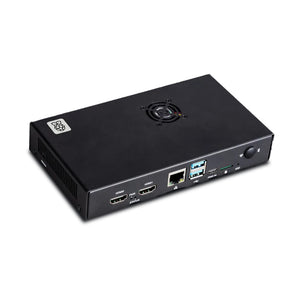The PyQRCode module is a Python library for creating QR codes that includes all of the necessary tools. The PyQRCode module's primary requirement is that it only run on Python 2.6, Python 2.7, or Python 3.
Many techies have contacted us about the process of generating QR codes from Python on Raspberry Pi because it has made it easier for them to send encrypted data to others. For example, if I want to send a link to my account information without giving the other person my account information, I can simply send that person a QR Code to make the payment.
We'll start with the fundamentals of QR codes for those who are unfamiliar with them, and then go on to the installation process. Let's get started!!!
What is QR code?
A QR code, or Quick Response code, is a two-dimensional matrix code that may be read by a machine or reader. The machine works on the reflection principle, in which it sends a laser beam through the QR code and receives the reflected picture, which is then allocated to an object or item. We utilize QR codes in our daily lives without realizing how important they are. Following are some of the ways that QR codes help us be more efficient.
- Inventory system
- Payment System
- Security
- Shopping
- Data loggers
Fast and efficient
QR codes were created in 1994 primarily for the automotive industry, but they quickly gained popularity in other industries due to their quick readability and large storage capacity. Many individuals predicted a bright future for this technology from the outset, which made it a smart choice for industry to use in their job.
Easy Interfacing with Python on Raspberry Pi
Python, on the other hand, has become a universal language for coders, with the majority of tech professionals utilizing it in their daily work. The question now is, “How can I make QR codes with Python?” Most people believe it is difficult, but it is actually quite simple.
If you're a student or a techie, this is a fantastic opportunity to learn about this initiative based on Raspberry Pi. QR codes, in my opinion, are cool to have because they assist users in making the facilitation process easier. It provides a more efficient method for consumers to obtain information related to QR Codes. It is one of the most efficient methods for reading a string of characters, such as numeric, alphanumeric, and byte/binary and Kanji. The QR code has the advantage of not being able to encrypt a message without scanning it.
Installation Process of Modules
Now, just to give you a general concept of what we'll be doing during the installation process, let's summaries what we'll be doing. To begin, we'll install a library called PyQRCode .
1. The installation PyQRCode on Raspberry Pi can be done by running the following command with pip3.
pip3 install pyqrcode
2. You also need to install an additional module in order to save QR code as png format. Run below command to install the module
3. Once installed successfully you can start writing a program on any python3 compatible ide.
Source Code :
# Import QRCode from pyqrcode
import pyqrcode
import png
from pyqrcode import QRCode
# String which represents the QR code
s = "www.sb-components.co.uk"
# Generate QR code
url = pyqrcode.create(s)
# Create and save the svg file naming "saved_qr.svg"
url.svg("saved_qr.svg", scale = 8)
# Create and save the png file naming "saved_qr.png"
url.png('saved_qr.png', scale = 6)
Output :









